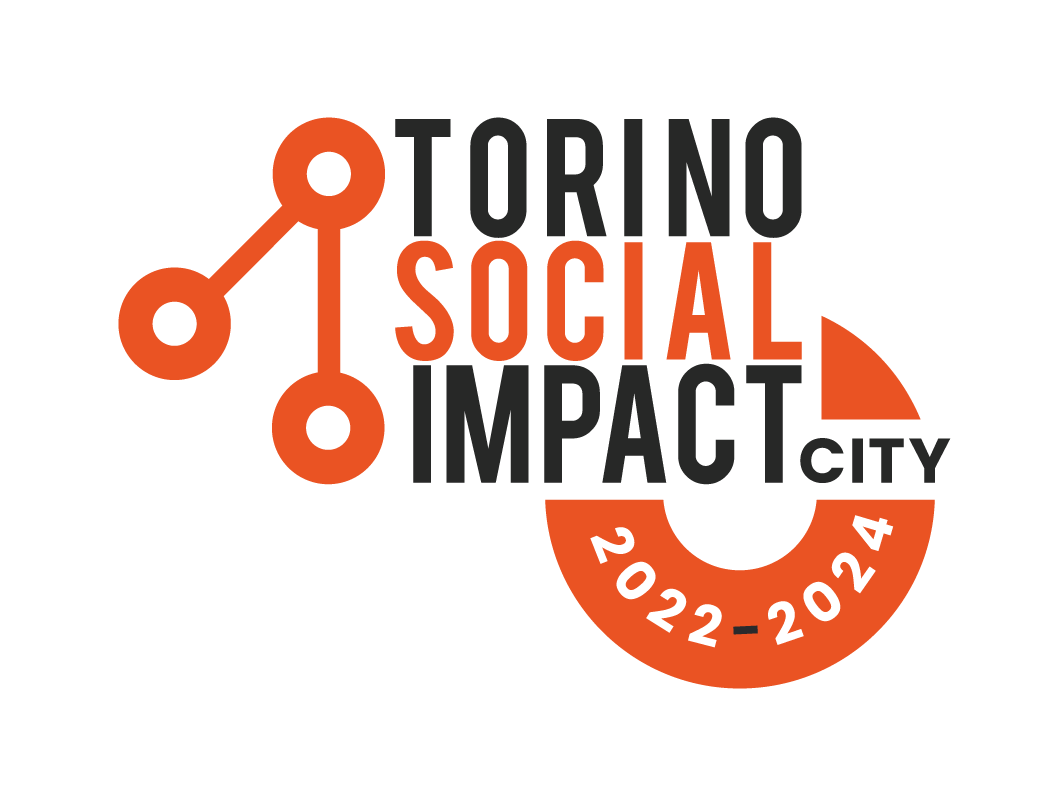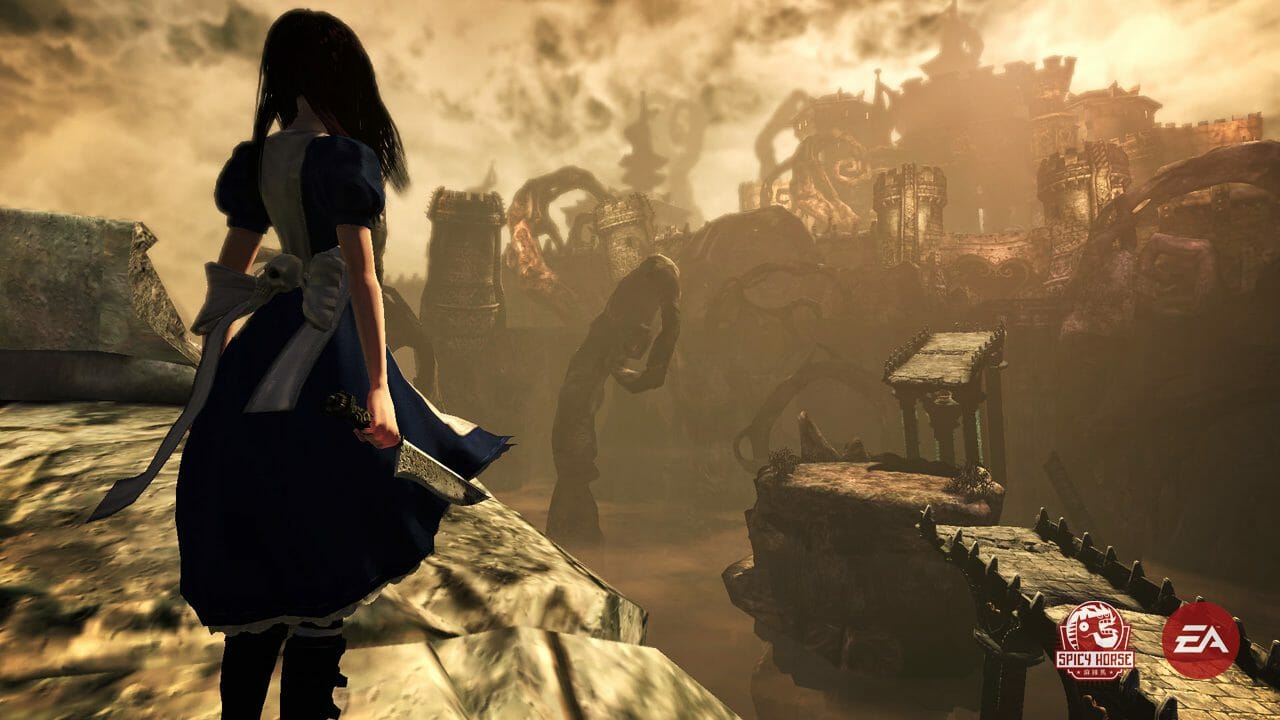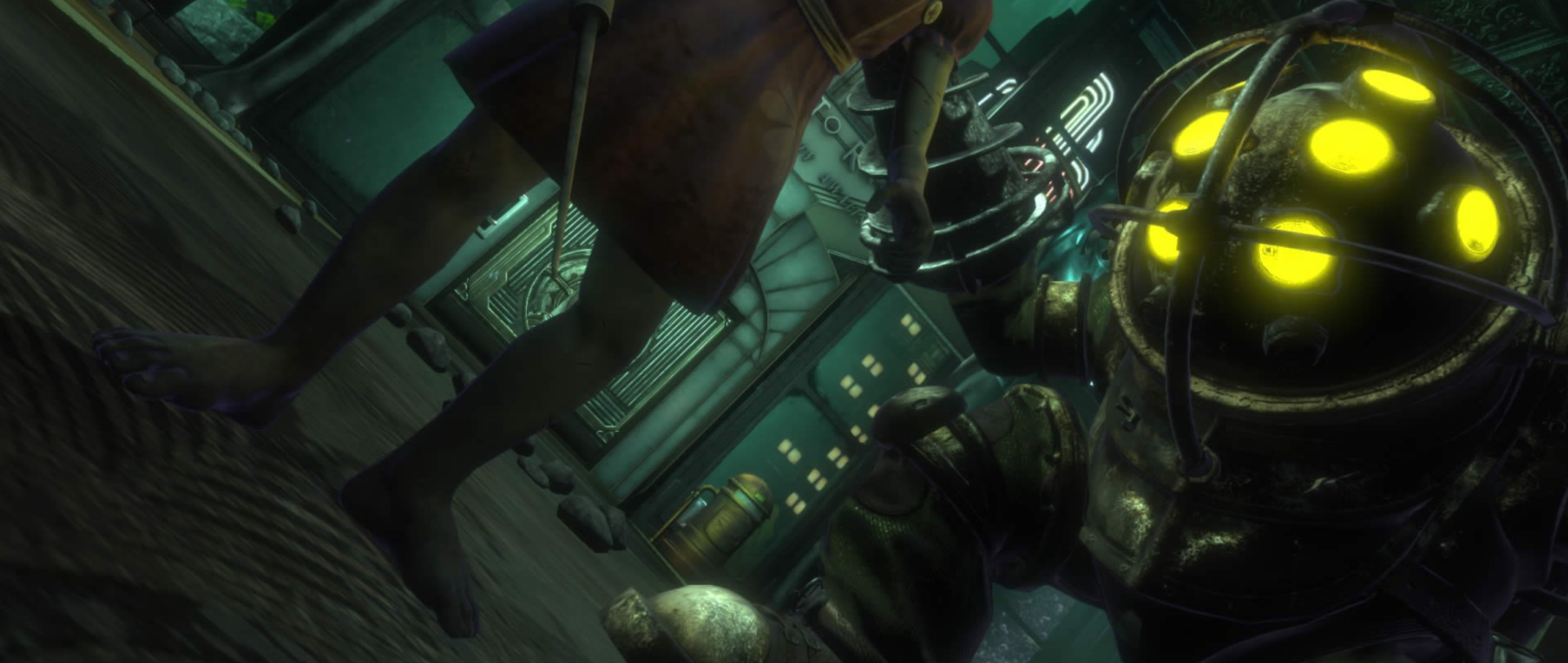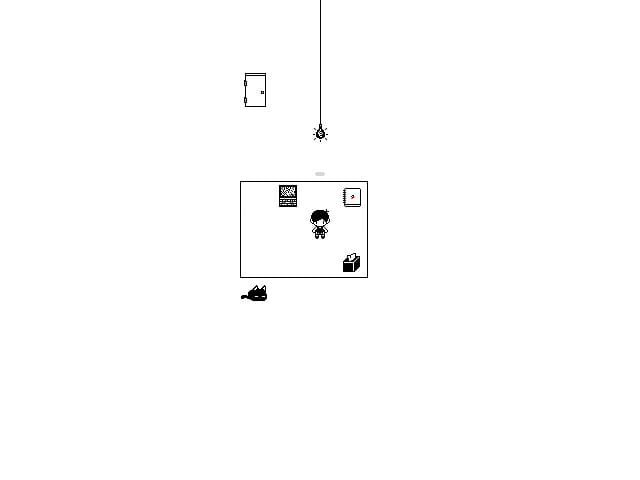
Psychonauts at 20 | Inside the Mind of a Cult Classic
Game designer
Studio
Art Director
Lead Composer
Publishing Year
Type of game
Genre
Subgenre
Country
The cult classic Psychonauts came out in 2005, published by Majesco Entertainment and developed by Double Fine Productions. Set in a quirky and imaginative world, the game follows a young psychic named Razputin as he infiltrates a summer camp for gifted children with mental abilities. Exploring the minds of others he uncovers a dark conspiracy and must use his psychic abilities to stop it.
LucasArts Alumni Assemble
Tim Schafer had just finished writing for Grim Fandango, a commercial flop that marked the end of LucasArts Studio. This indicated that the market was shifting, and point-and-click adventure games were not as profitable anymore. Schafer, however, didn’t want to abandon his mission to continue crafting imaginative, narrative-driven games. In 2000, he founded Double Fine Productions with a few friends from LucasArts. Players could expect expert writing, boundless creativity, and great comedy since they were responsible for some of the most beloved cult classics in gaming history (Grim Fandango, Day of the Tentacle, Full Throttle, and the unforgettable Monkey Island).

After struggling with publishing, they finally delivered their debut game, Psychonauts. Surprise, surprise: it sold poorly. Nevertheless, it was acclaimed by critics and loved by aficionados of the genre, making Psychonauts a cult classic.
True to its spirit, Double Fine is still going strong today. In the 2010s, the studio launched Double Fine Presents, a publishing label that helped spotlight other quirky indie gems. Then, in 2019, Double Fine joined Xbox Game Studios. Though it meant partnering with a major company – something Schafer had long avoided.
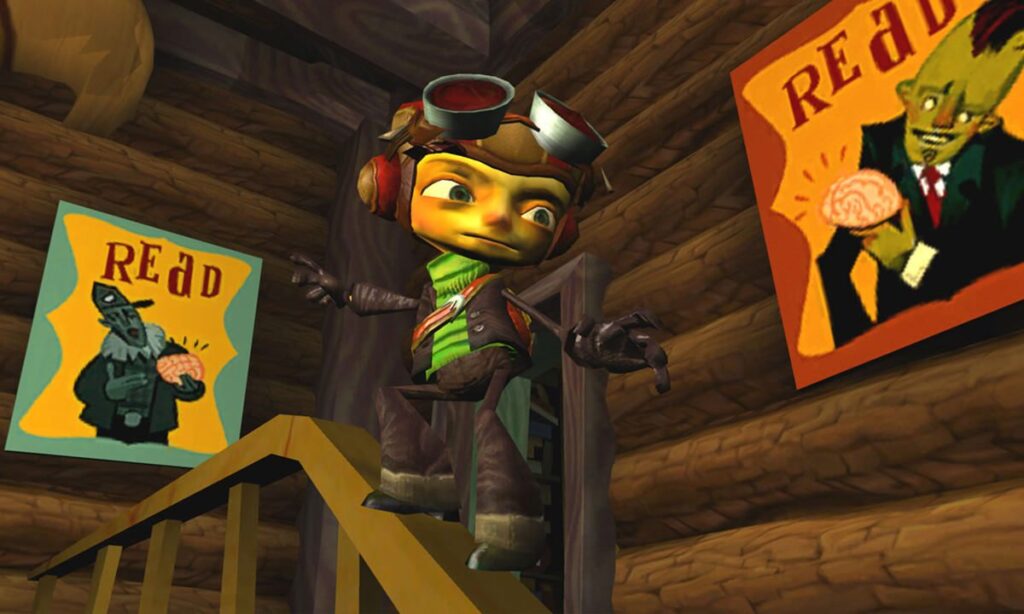
One of Double Fine’s standout recent releases, besides Psychonauts 2, is Broken Age, which came out in 2014. This point-and-click adventure was famously crowdfunded via Kickstarter, becoming a milestone in gaming history by raising over $3.3 million, far surpassing its original goal.
How Psychonauts came to mind
Schafer wanted to have an episode in Full Throttle in which the protagonist, the big-chinned tough biker Ben, takes peyote and goes on a quest inside his own mind.
Somebody going on an interactive vision to find a solution to a puzzle is interesting because I think sometimes you know more than you think, you know? Through hypnosis, sometimes people recover memories and things.
Tim Schafer interviewed by NME in 2021
The idea was scrapped for Full Throttle because LucasArts was not fully onboard. Tim moved on to other projects, but the concept lingered. Eventually, it evolved into Psychonauts, taking shape through collaboration and exchanging ideas within the new team at Double Fine. In the same interview with NME, Schafer states:
Someone told me […] ‘the thing I like about this game is every level is about healing.’ I didn’t set out to make a game about healing, but that’s just naturally what flows out of going into someone’s mind and helping them with what they’re struggling with.
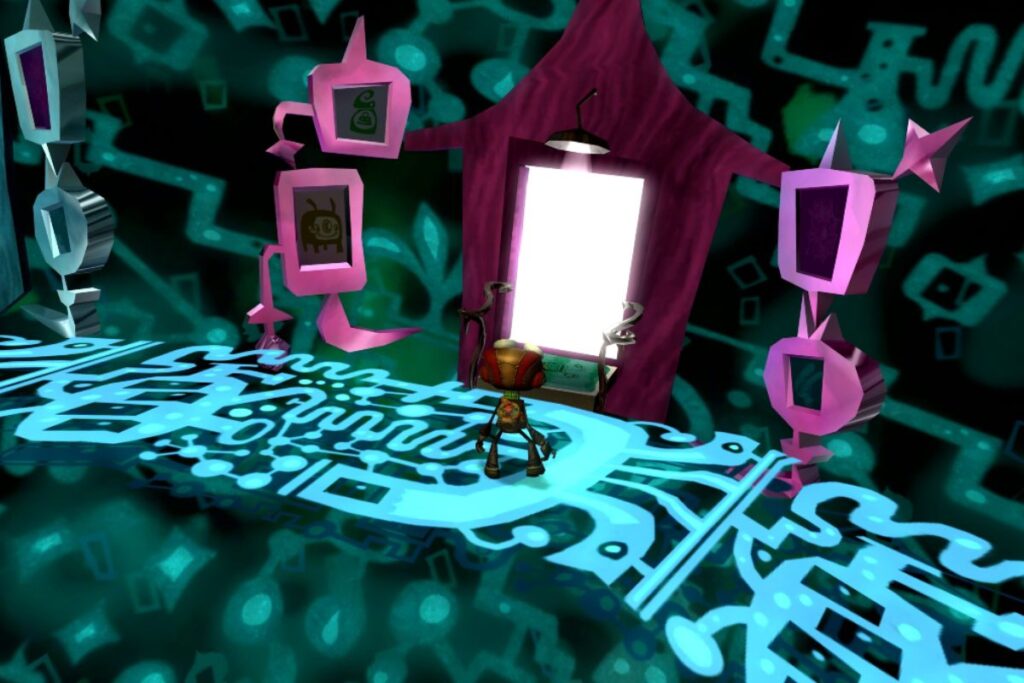
Story of a Psychonaut in Training
The player takes the role of Raz, a young boy who works at his family’s circus but harbors a deep fascination with the psychic world and a talent for entering people’s minds. This takes him to Whispering Rock Psychic Summer Camp, a training ground for young psychics hoping to become Psychonauts – elite agents who use psychic powers to dive into minds and solve problems from within.
Raz meets a group of eccentric mentors at the camp who guide him in honing his abilities. When a sinister plot to steal the campers’ brains emerges, Raz must leap into the minds of others, face their inner demons, and uncover the truth before it’s too late.
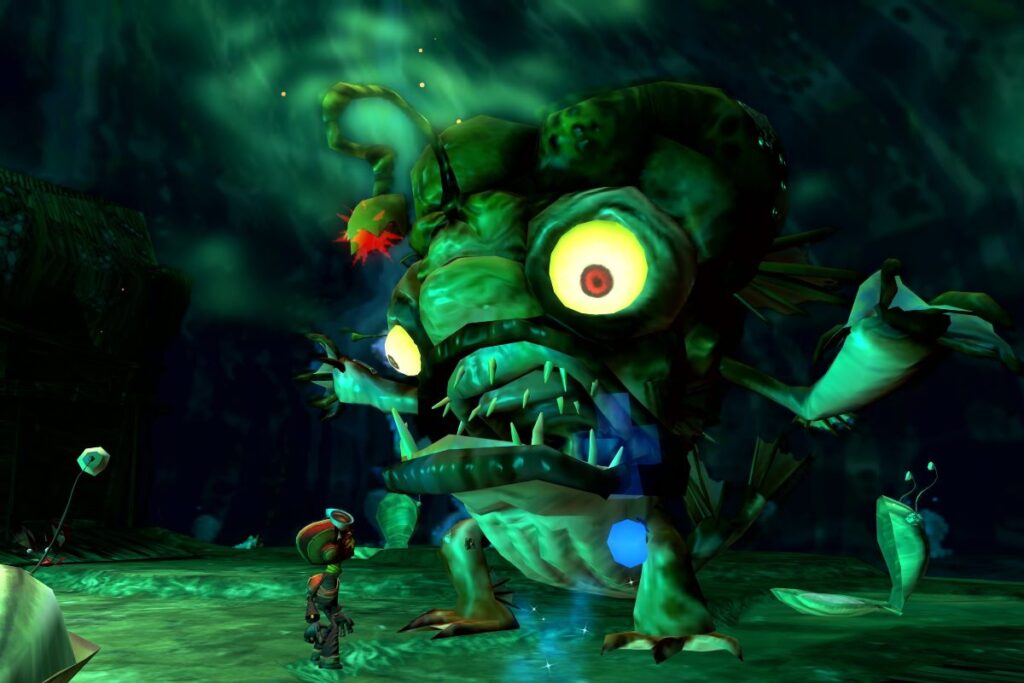
Visuals and Sound
Psychonauts showcases a unique and vibrant visual style, with exaggerated, cartoonish designs that draw inspiration from darker, offbeat cartoons like Invader Zim, Courage the Cowardly Dog, and Ed Edd & Eddy. Fun fact: Richard Horvitz, the voice actor for Raz, also voiced Zim in Invader Zim! This striking art style enhances the game’s whimsical yet eerie tone, with surreal, imaginative environments that reflect the inner worlds of its characters.
The music, composed by Peter McConnell, adds to the experience with a quirky, memorable score that perfectly complements the eccentric atmosphere. Together, the visuals and sound create a world that feels fantastical and emotionally rich.
Playing Psychonauts: the medium is the message
From a gameplay perspective, Psychonauts fits right in with the dominant style of early 2000s 3D platformers. These games – often level-based adventures – involved exploring large environments, gradually unlocking new abilities that granted access to previously unreachable areas. Titles like Crash Bandicoot, Ratchet & Clank, and Sly Cooper and the Thievius Raccoonus defined this era, with Sly Cooper standing out in particular for how closely it aligns with Psychonauts regarding level and character design.
Psychonauts ties each level design to the personality of the character in question. Instead of generic biomes like “mountain,” “jungle,” or “underwater,” the environments are meaningful and provide insight and lore. This form of environmental storytelling pushed platformer design in a more psychological and narrative-driven direction. Psychonauts masters the art of letting the medium be the message. These aren’t just themed stages – they’re psychological landscapes, shaped by emotions, fears, memories, and trauma.
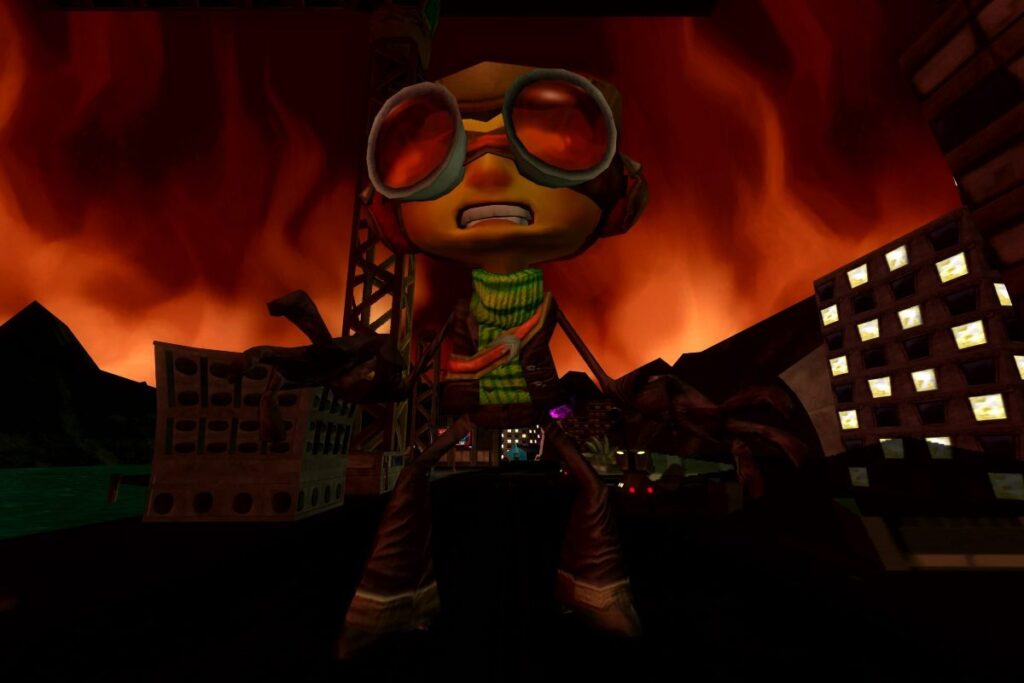
For example, Coach Oleander’s mind is structured like a war-torn battlefield, reflecting his obsession with military discipline and control. However, buried within are hints at deeper insecurities and unresolved issues. Milla’s mind, in contrast, is a swinging colorful 1960s party – yet if the player explores carefully, they’ll uncover hidden trauma related to a tragic fire from her past.
Visually, each mind is unique. Every object, color scheme, and design choice is placed with purpose. Even the collectibles support this concept. Items like Emotional Baggage and Memory Vaults aren’t just platforming fluff – they’re symbolic artifacts. Emotional Baggage represents repressed feelings, which the player can help resolve by finding their “tags,” while Memory Vaults are interactive cutscenes revealing hidden backstories about the mind’s owner.
What Psychonauts teaches us about the mind
One of the most frequent ways Psychonauts displays mental habits and the mechanics of the human mind is through their enemies—manifestations of internal psychological processes made interactive.
For example, Censors are common enemies throughout the game, especially in more stable minds. They represent the mental mechanism that tries to eliminate “unacceptable” or “inappropriate” thoughts -anything that doesn’t belong. Much like in the movie Inception, as a matter of fact. Their job is to remove intrusions, like Raz, from the mind. But not every mind has them.
In the fan-favorite Milkman Conspiracy level, there are no Censors. This absence is meaningful. Boyd Cooper’s mind is in a state of total delusion and paranoia. His thoughts are unchecked, jumbled, and constantly swirling in surveillance conspiracies. The fact that there are no Censors shows us that his psyche has lost the ability to self-regulate. No thoughts are being repressed or filtered because the mental systems that would do so have broken down.
Psychonauts doesn’t just tell players that a character is anxious or depressed; it lets them play through it. Another game that uses bosses and levels to represent an emotional and psychological situation rather than a physical one is It Takes Two.
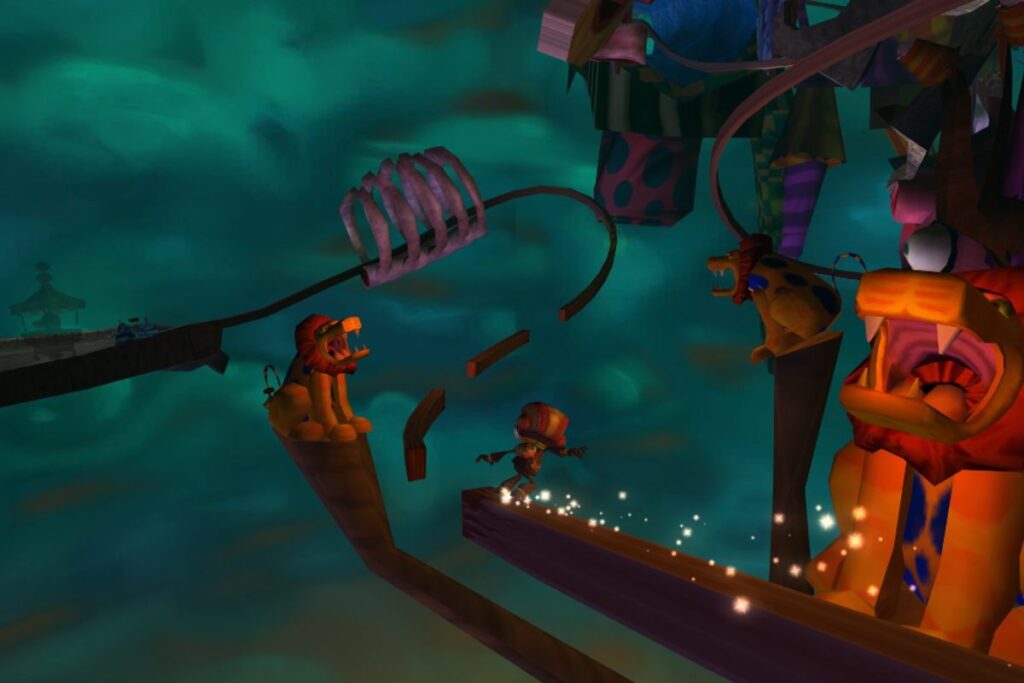
The Controversy: Mental Manipulation as a Cure
Psychonauts walks a delicate line. On one hand, it dives headfirst into the subject of mental health. On the other hand, it’s wrapped in a whimsical, comedic tone meant to make the experience accessible and enjoyable for a broad audience, including children. The first game sometimes falls into arguably harmful stereotypes, of which the team is fully aware today.
One level that sparked some debate is Gloria’s Theater, which metaphorically explores her experience with bipolar disorder. The stage shifts between two extremes – light and dark personalities – and Raz must manipulate these theatrical elements to balance Gloria’s inner world. The mechanic is simple; some have argued it risks oversimplifying severe conditions. However, the game never suggests that the character is entirely “cured” – instead, it shows that progress and understanding are possible, and often necessary to move forward.
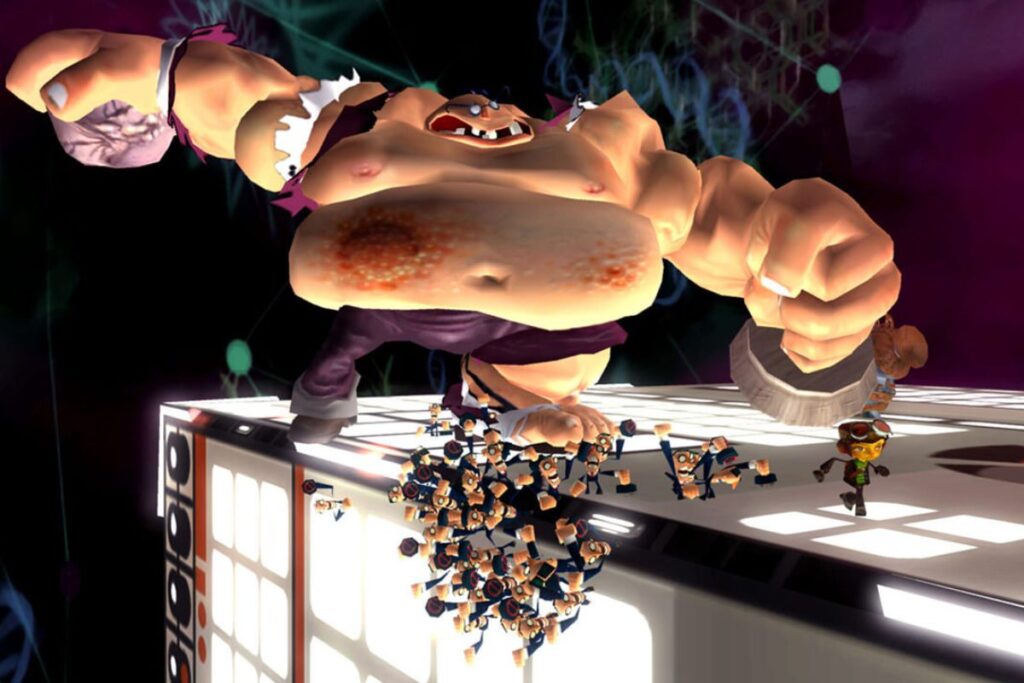
Despite the inherently humorous tone, Psychonauts doesn’t intend to make mental illness a joke. The characters affected aren’t the punchline; the writing constantly emphasizes empathy. As Tim Schafer later reflected:
You can’t help but have empathy I think, once you’re inside someone else’s mind, seeing the world through their eyes and seeing what they’re struggling with. It’s that basic good advice you get hopefully when you’re younger, which is to be kind to people because you never know what they’re going through.
Tim Schafer interviewed by GameIndustry in 2021
Psychonauts 2: The “Thought-After” Sequel
Released in August 2021 and published by Xbox Game Studios, Psychonauts 2 picked up the story just three days after the original game’s events, though for fans, it had been a longer wait. Tim Schafer humorously acknowledged the time gap when choosing to keep the original voice actors: “For some of us, it’s been three days; for others, it’s been 15 years.”
The sequel takes Raz into the heart of the Psychonauts headquarters, expanding the world while diving even deeper into the psyches of its eccentric characters. The mental worlds remain just as imaginative and symbolic, with greater attention to nuance and sensitivity. The team worked with mental health professionals to portray complex issues more respectfully and thoughtfully. That balance of dark themes, humor, and empathy made the game a critical success and a deeply satisfying continuation. Psychonauts 2 retained everything fans loved while evolving meaningfully and maturely.
20 Years of Psychonauts
What makes Psychonauts stand out alongside similar titles is its theme and storytelling. The team behind Psychonauts was an expert at writing intricate stories with foreshadowing and three-dimensional characters that are easy to understand and love. By the end of the game, the player has a complete grasp of all their regrets and trauma, what makes them joyful, and what makes them sad. The plethora of emotions and struggles explored is so rich that it’s impossible not to feel like, in some instances, the game is speaking to you, helping you get through whatever you’re going through.
The game doesn’t present clinical diagnoses or try to “fix” people definitively. Instead, it offers a magical, stylized approach to mental struggles that encourages curiosity, kindness, and emotional awareness. For younger players, especially, Psychonauts provides an approachable and thoughtful introduction to the idea that everyone is fighting their own internal battles, and those battles are worth understanding.
This year marks the 20th anniversary of its release, a perfect occasion to revisit the original game and double down on playing the sequel.
Tag
Buy a ☕ for Hypercritic
